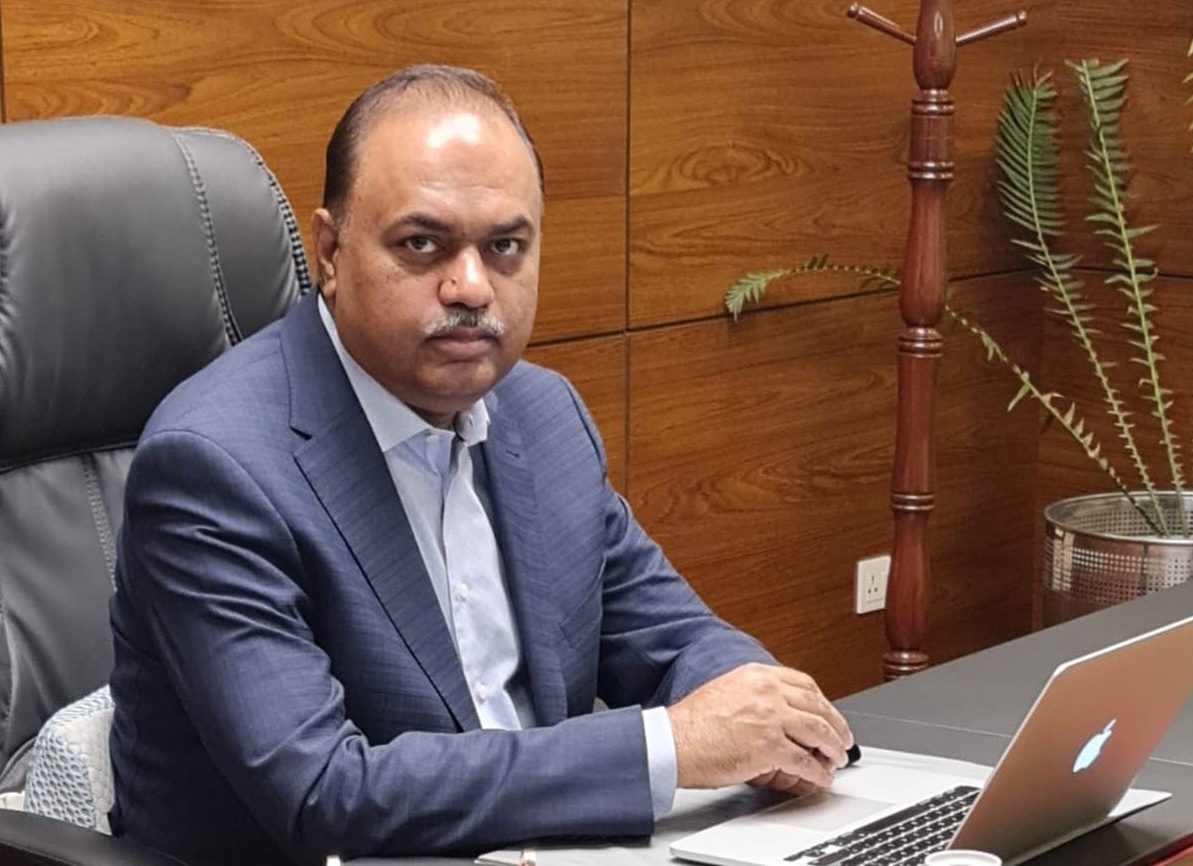In Lahore, Pakistan, there is a seven-year-old girl with an amateur interest in gas turbine maintenance. Over the past few months, Waqas Ahmad, a senior customer portfolio manager at GE Vernova, has given his curious daughter a layman’s introduction to heavy-duty turbine inspections. It all started in January, when Waqas and his colleagues kicked off the “planned outages” of four GE Vernova 9HA turbines in two gas power plants in the Pakistani province of Punjab. With strict deadlines looming, Waqas’s team was feeling the pressure. “This was a really big milestone,” he says. “Some of us were feeling a little nervous.”
But as Waqas gave a high-level view of the various processes to his rapt student, such as the job of removing the turbine cover to winch out its 110-ton rotor, he felt his nerves melt away. “I always knew how important these inspections were,” he says. “And it reminded me how well we’d prepared for them,” he adds, referring to the 24 months of careful planning for the outages.
All their preparation has paid off. In early February, after five weeks of intense checks, Waqas had an extra-special bedtime story for his daughter. He was now part of a 40-strong, multinational GE Vernova team that had completed the first major inspection of a 9HA turbine in the Middle East and South Asia regions. “The unit started on the first attempt, and we went straight to baseload generation,” says Waqas. By mid-April, his team had chalked off the other three major inspections, all on time and hitch-free.
The smooth inspections allowed the state-owned utility to resume generating hundreds of gigawatt-hours of power per week, right on schedule. “That’s essential in Pakistan, where every megawatt counts,” says Mehmood Rahim, a Pakistan service director at GE Vernova, referring to the country’s recent efforts to provide reliable, affordable and efficient power. In the longer term, such frictionless health checks are a major confidence boost for the country’s grid.
The outage success has put the Pakistani team on the map. “Global teams with impending outages are now coming to us for advice, and we’re sharing lessons learned and best practices with them,” says Rahim. The South Asian nation might just have a new, budding female engineer in their ranks. “My daughter was amazed by the stories of the inspections,” says Waqas.
A Stern Test
Pakistan pinned its future on gas in 2015, when it began importing liquid natural gas and awarded GE Vernova contracts to supply six 9HA.01 turbines for three power plants in Punjab: Haveli Bahadur Shah, Bhikki, and Balloki. By July 2018, all six units had begun full commercial operations. The 9HA fleet has beefed up the Pakistani grid, with the three plants generating up to 3.6 gigawatts, the equivalent power required to cover the needs of approximately 7.5 million homes in Pakistan. The always-available six-turbine squad is also a steadying force, providing greater inertia to stabilize grid frequency and reduce the risk of blackouts. They’re future-proofing the Asian country’s grid too, providing a sturdy platform for the addition of renewables in the future.
Like cars, the average gas turbine needs periodic inspections to maintain its performance. Similar to how mechanics pop the hood to get a close-up look at a car engine, engineers pry open a turbine’s outer casing to scour every inch of its hot gas path components for wear and fatigue. That’s followed by extensive temperature, pressure, and vibration tests on static and rotating parts. If all checks out as normal, they’ll refix the casing and clear the turbine to rejoin the power grid.
But the 9HA is no ordinary gas turbine. It’s more like a high-end racing car, harnessing innovative materials, an advanced combustion system, and the capability to burn up to 50% hydrogen. That’s how it combines record-breaking efficiency, high output, and operational flexibility all in one package. The 9HA is mechanically complex, too, which makes disassembly almost as delicate as open surgery.
“We needed around 15 special tools to take out each part, like for casings, combustion liners, fuel nozzles, and transition pieces,” says Waqas. “There are also around 40 non-standard jobs for this major inspection,” he adds. Like pit lane mechanics in Formula 1, GE Vernova’s Pakistani engineers were up against the clock. They were contractually obliged to complete each of the four major inspections within 35 days.
Seamless Collaboration
But the Pakistani team had done their homework. Over the previous two years, they’d assembled expert engineers and technicians, drawn up detailed inventories of turbine parts and tools, and devised day-by-day schedules for the job. Their plans emphasized seamless, round-the-clock collaboration, and ultraefficient resource allocation. Although they had 140 days to complete the four inspections, they set themselves a much stricter deadline. They’d stagger the four inspections over 100 days, with the first two 9HA turbines at Haveli Bahadur Shah coming offline on New Year’s Day and rejoining the grid in late February. Checks on the second pair, at Balloki, would run from March 1 until mid-April.
But there’s planning and then there’s being prepared to roll with whatever you encounter. “You don’t really know what’s going to happen until you open the thing up,” says Waqas. On the fateful day, engineers peeled the outer casing off the first 9HA turbine to reveal the all-important rotor. Waqas peered anxiously at its blades. Here’s why: “We can’t make some kinds of [rotor blade] repairs on-site, and we don’t have any spare rotors in Pakistan,” he says. Significant rotor blade damage would have required sending the crucial parts abroad for repair, resulting in a delay of up to four months.
Waqas breathed a sigh of relief: The rotor was intact. In fact, the entire plan went like clockwork. On-site and remote engineers walked the Pakistani team through the turbine’s full disassembly. Tools and parts were in situ, thanks to the advice of GE Vernova’s repair shops in Singapore, Hungary, and Greenville, South Carolina. Warehouses in Amsterdam and Atlanta kept their lines open around the clock for urgent orders.

“An outage can only really be successfully executed when everything and everyone work together in sync,” says Zahra Mushtaq, a Karachi-based field engineer at GE Vernova, who was part of the team. “It was a privilege to work with this team that functions with a can-do, will-do attitude,” she adds. The smooth teamwork wasn’t born of luck: GE Vernova, whose gas power, wind, and hydropower plants have supplied Pakistan with a significant percentage of its electricity since the 1960s, is a seasoned investor in the South Asian country’s local talent.
By day 19 the team had completed minor repairs on the first 9HA and were oozing confidence. Well before the sun rose on day 35, the turbine was back online and running. It was then a case of rinse and repeat, three times. By mid-April, all four grid Goliaths were back online and the job was done, well ahead of schedule.
Promising Signs
“Not only did their efforts meet expectations, but they also exceeded them, reinforcing our confidence in GE Vernova’s ability to handle complex outages with professionalism,” said Akram Kamal, chief executive officer of Pakistan’s National Power Parks Management Company (NPPMCL), which operates both the Haveli and Balloki plants.

GE Vernova can count another satisfied customer. And the successful outages are a benchmark for the region’s forthcoming wave of heavy-duty turbine inspections. There are several 9HA gas turbines installed in the United Arab Emirates and Bahrain, and 7HA gas turbines on order in Saudi Arabia. Since the region’s fleet is slightly younger than Pakistan’s squadron, many of the turbines are fast approaching their first planned outages.
Safety First
Rahim is proud of the job’s impeccable safety record. “We did four months of work, had nearly 200 people working on the jobs, and completed thousands of man-hours, with zero [health and safety] incidents,” he says. Again, proactive planning had paid its dividends, since every stage of the plan included a full risk assessment. A healthy “speaking up” culture helped, too. “If anyone felt any kind of risk or insecurity, they stopped work and reported the concern,” says Rahim. The on-site team would rectify the issue before continuing work, he adds. Safety isn’t just important for protecting people, but also for enhancing customer trust and operational reliability.
The Pakistani team has forged a reputation as “the outage guys,” but they’re not resting on their laurels. They’re already holding workshops, forums, and monthly calls about major inspections with their GE Vernova colleagues. “We’re now the gold standard for outages,” says Rahim. He is looking forward to applying the lessons learned in Pakistan to the first-time outages across the region, and shaping the future of reliable, sustainable power.
As for Waqas, he sees the achievement as vindication of GE Vernova’s culture. “We’re always talking about collaboration, commitment, accountability, responsibility,” he says. “Now we know those things are definitely there.” One day, his daughter might see it for herself.
